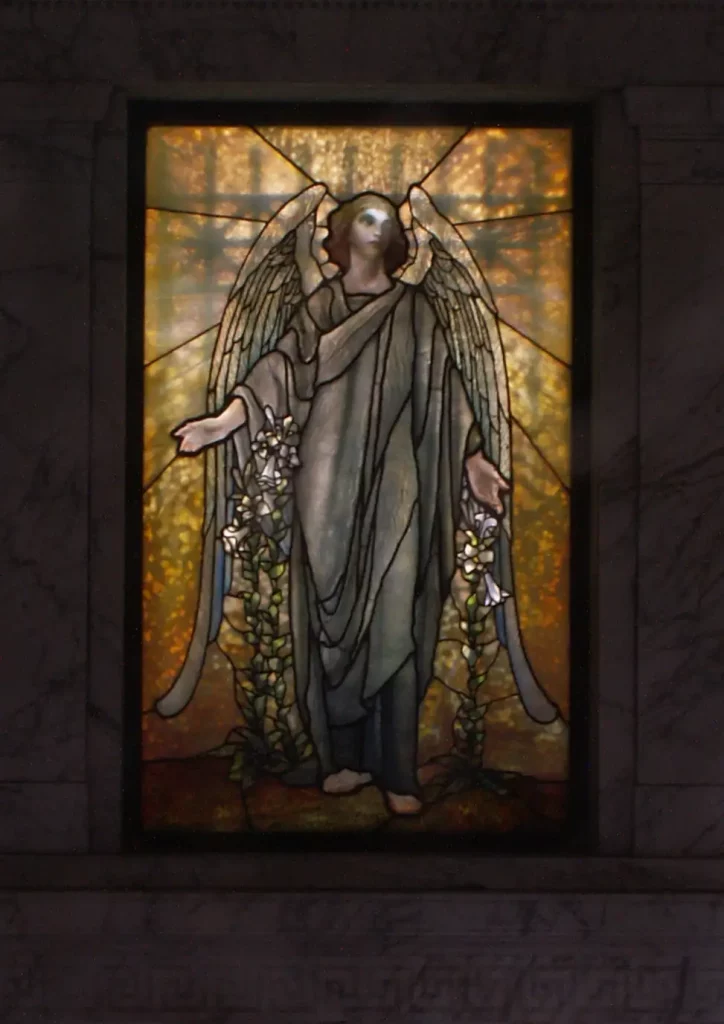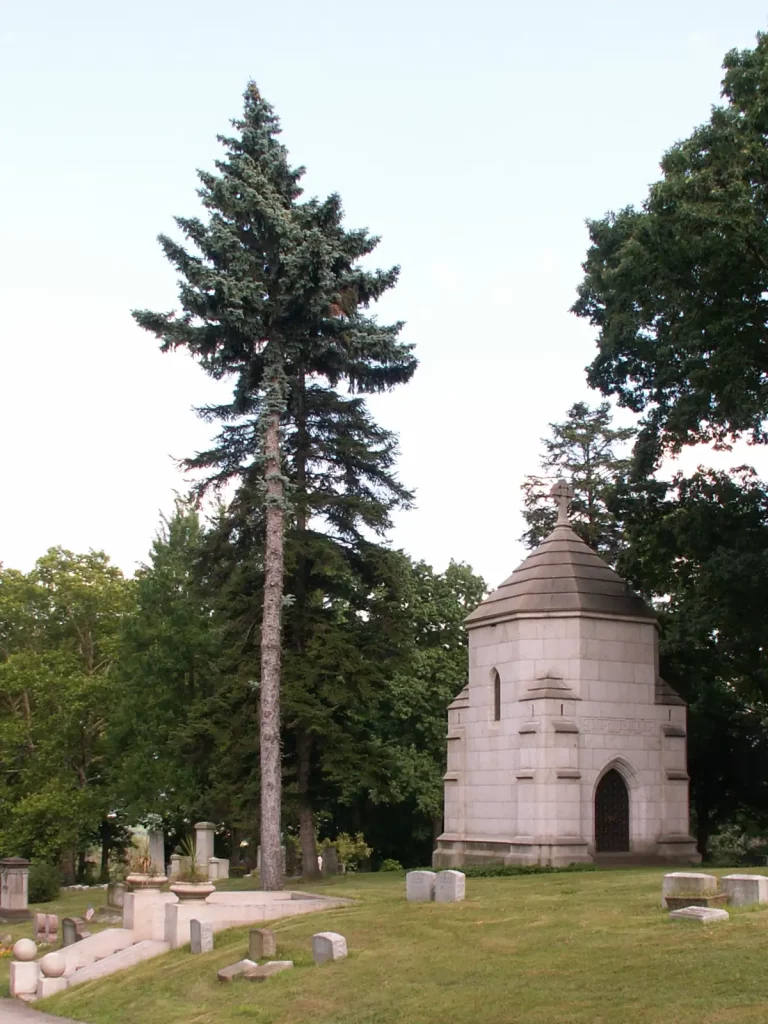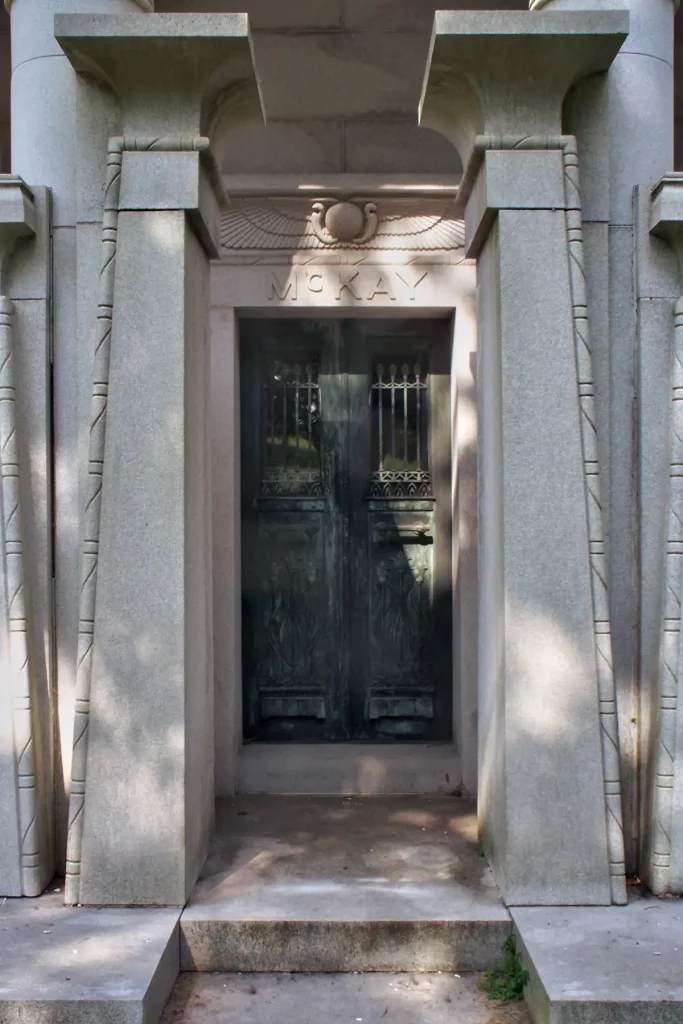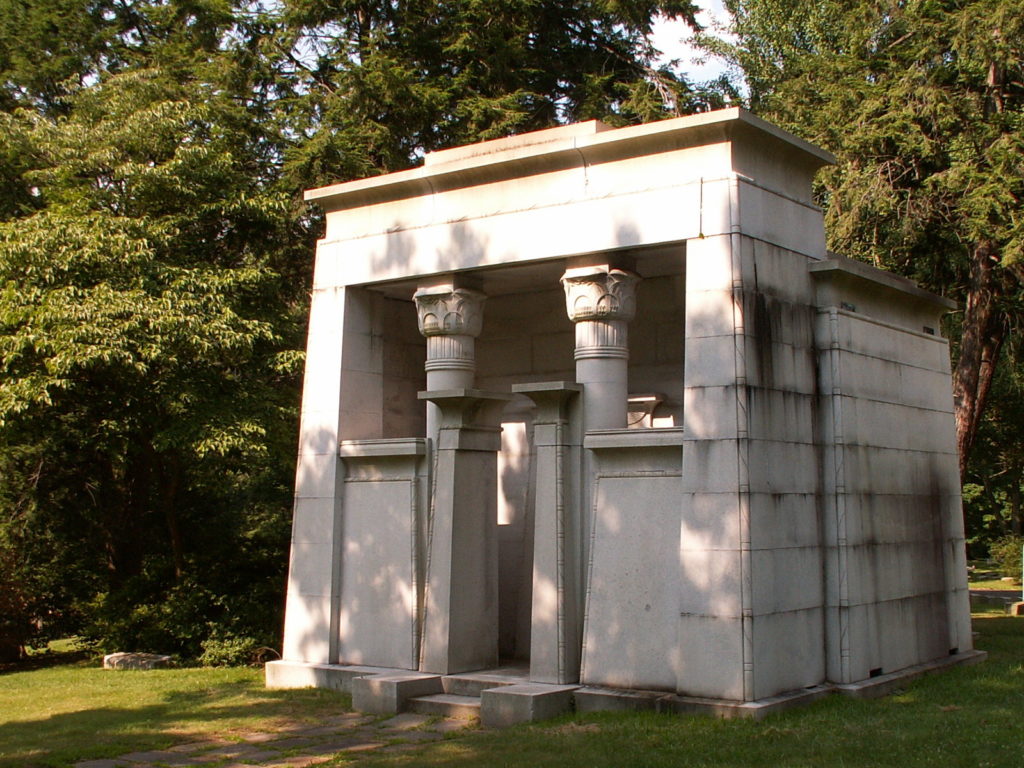Robert Pitcairn, for whom the borough of Pitcairn is named, was head of the Pittsburgh Division of the Pennsylvania Railroad. It sounds like a mid-level management position, but in fact it was more like a viceroyalty. This elegant Corinthian temple demonstrates how wealthy such a position could make a man.
This particular picture has been donated to Wikimedia Commons under the Creative Commons CC0 1.0 Universal Public Domain Dedication, so no permission is needed to use it for any purpose whatsoever.
















